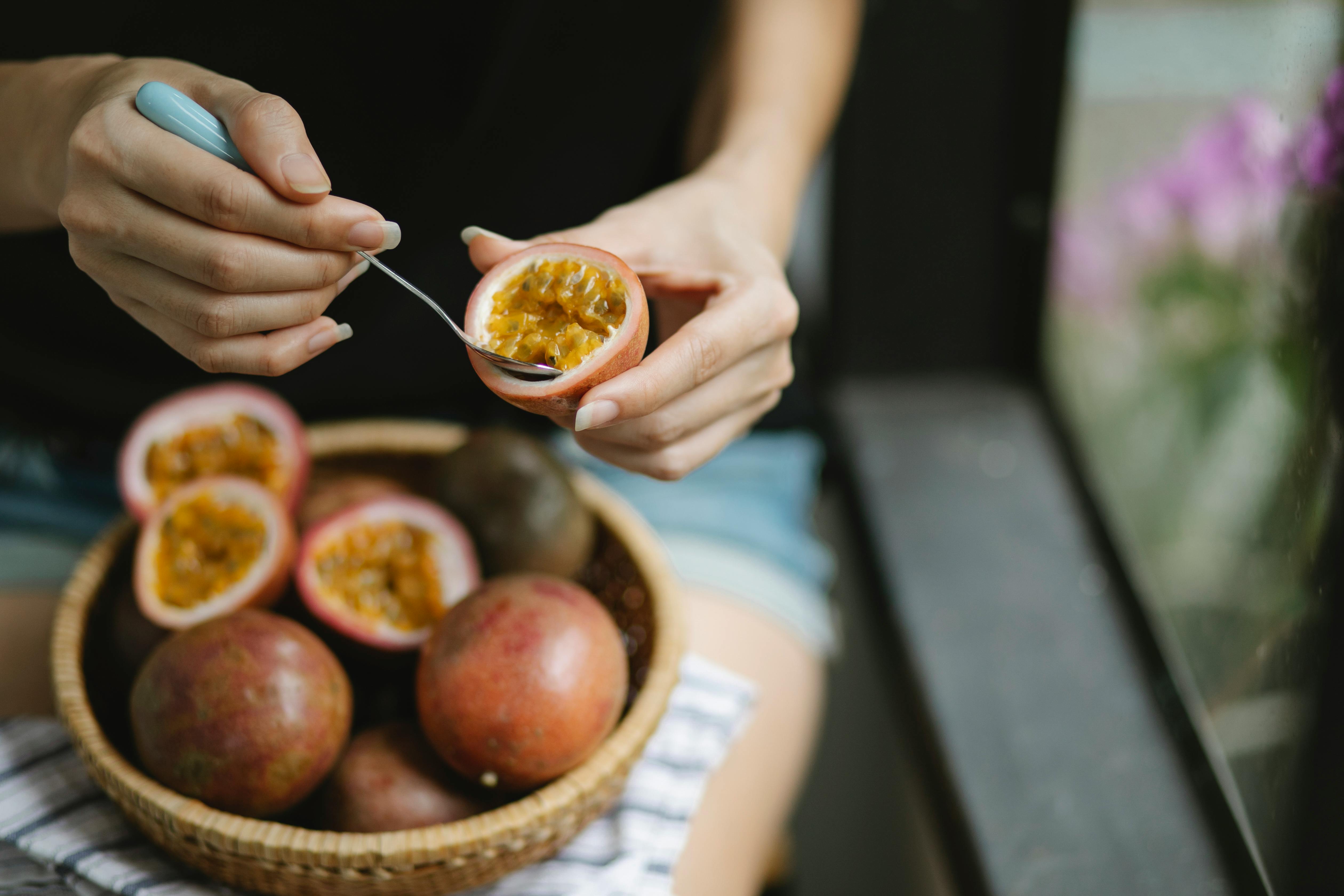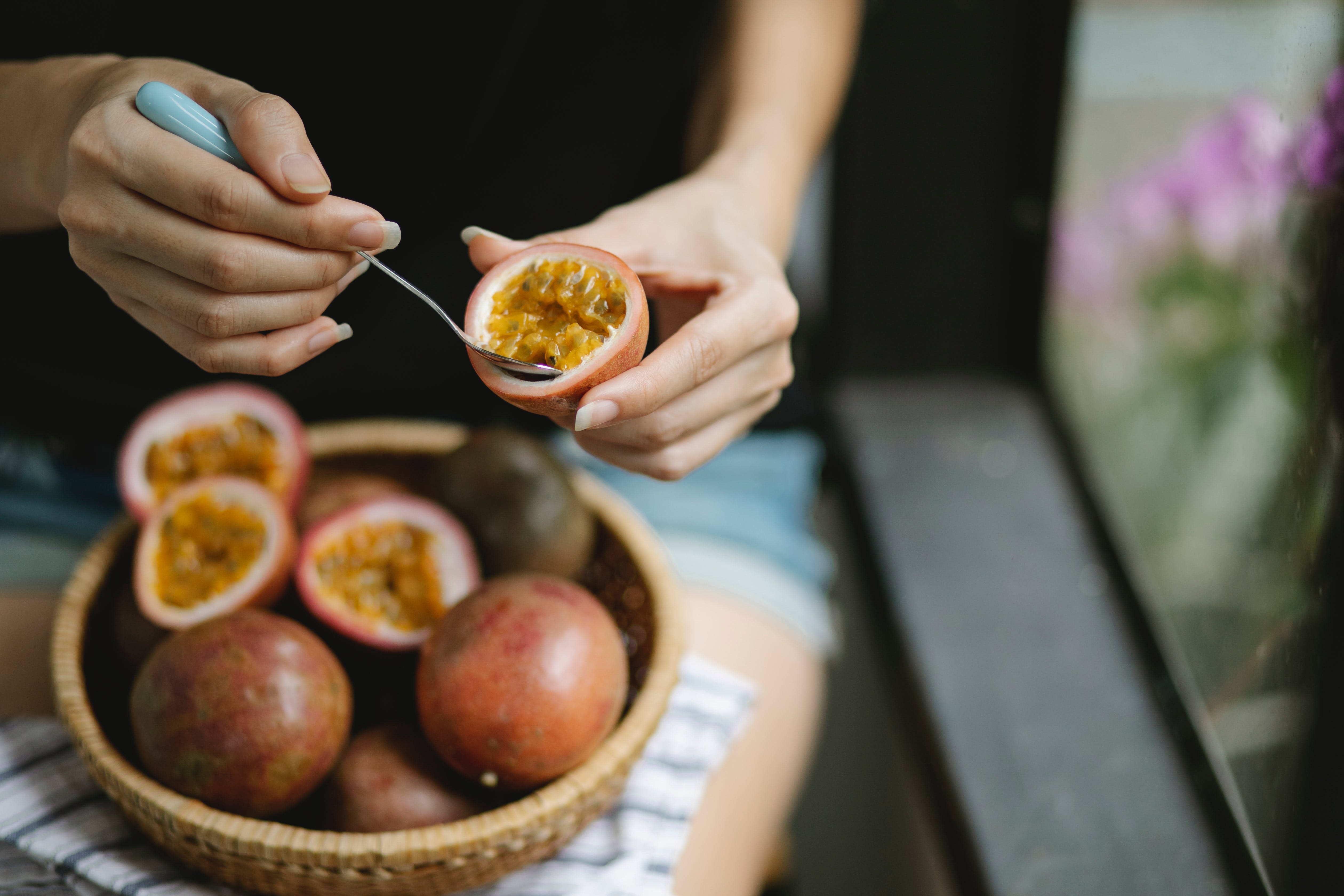Passion fruit is a delicious and exotic fruit that can be enjoyed in many different ways. Knowing when a passion fruit is ripe is key to getting the best taste and texture out of the fruit. There are several signs that you can look for to determine whether or not a passion fruit is ripe and ready to be eaten. In this article, we will discuss how to know when a passion fruit is ripe so that you can enjoy it at its peak of freshness.To tell if a passion fruit is ripe, you should look for a fruit that is firm but slightly soft to the touch. It should also have a deep yellow-orange color and be slightly wrinkled at the ends. The aroma should be sweet and fragrant. If you cut it open, the flesh inside should be full of juicy and flavorful pulp.
What Does A Ripe Passion Fruit Look Like?
A ripe passion fruit is typically round to oval in shape and about the size of a lemon or lime. The exterior of the fruit will be wrinkled and dimpled, and it will have a purple or yellow hue. When ripe, it should yield slightly to light pressure. The inside of the passion fruit contains hundreds of edible seeds suspended in a juicy, tart-sweet pulp that ranges from yellow to deep orange. The taste of a ripe passion fruit can vary from sweet and mild to tart and acidic, depending on the type of passion fruit.
When selecting a passion fruit for purchase, look for one with a bright color and no signs of mold or bruises. Also make sure that the skin is not too soft, as this can indicate that it is overripe. Ripe passion fruits are best eaten fresh or used in desserts such as sorbets, custards, drinks, jams, or sauces.
Knowing The Color Of A Ripe Passion Fruit
Passion fruit is a tropical fruit native to the Amazon region. It is an important ingredient in many recipes, as it adds a tart and sweet flavor to dishes. It is also rich in vitamins and minerals, making it a nutritious snack or addition to salads and other dishes. But what color is a ripe passion fruit? Knowing the right color of a ripe passion fruit can help you decide when it’s time to pick them for your recipes.
A ripe passion fruit typically has a yellow or purple hue, depending on the variety. If you’re picking your own passion fruits, look for those with smooth skin and no blemishes or bruises. If the skin is wrinkled or soft, then it’s probably overripe. The yellow variety will have more of an orange hue when ripe, while the purple varieties will be almost black in color.
The best way to tell if a passion fruit is ripe is by squeezing it gently. If it yields slightly under pressure, then chances are that it’s ready to be harvested. Another way to tell if it’s ready to eat is if you can smell its sweet aroma when you scratch its skin lightly—this indicates that the flesh inside is ready for eating.
When purchasing pre-picked passion fruits from your local grocery store or farmers’ market, look for fruits that are firm with smooth skin and no signs of bruising or decay. You should also avoid buying any that are too soft or shriveled up as this could mean they’re past their prime. In addition, you should avoid any that have been stored in direct sunlight as this can cause them to overripe quickly and lose their flavor and nutrition value.
In conclusion, knowing the right color of a ripe passion fruit can help you pick out the best ones for your recipes and ensure they’re at their peak freshness when eaten. When selecting pre-picked fruits from the store, look for those that are firm with smooth skin and without any bruising or decay. Also make sure they haven’t been stored in direct sunlight as this could cause them to overripe quickly and lose their flavor and nutrition value.
Feeling The Texture Of A Passion Fruit
The texture of a passion fruit is soft and slightly bumpy, like a ripe peach. It is juicy and slightly acidic, with a strong sweet-tart flavor. The seeds are edible, though they can be slightly bitter if eaten raw. Passion fruit has a thin outer skin that can be peeled off to reveal the flesh inside. The texture of the flesh is similar to that of an orange or a grapefruit, though it is much more tart in flavor than either of those fruits. When cut open, passion fruit reveals small edible seeds which have a crunchy texture and are encased in a jelly-like substance.
Passion fruit can be eaten fresh or used in cooking or baking. It is often added to smoothies, salads, ice cream or sorbets for an extra tangy flavor. It can also be used to make jams, jellies and sauces that can be used on top of cakes and other desserts. To get the most out of the fruit’s flavor and texture, it should be consumed when it is ripe and juicy. When selecting passion fruit at the store, look for those that are plump and have a vibrant yellow color on the outside.
When preparing passion fruit at home, it should be washed thoroughly before consuming as there may be bacteria on the surface of the skin due to handling by customers at the store. After washing it gently with soap and water, cut it in half with a sharp knife being careful not to cut too deep so as not to damage the flesh inside. Once opened up you will see small edible seeds which can be scooped out with a spoon or eaten along with the flesh if desired.
To enjoy all aspects of this unique fruit’s texture and flavor profile its best consumed fresh but it can also be enjoyed in many different recipes such as smoothies or desserts like sorbets or even baked goods like muffins and breads. No matter how you choose to enjoy this delicious tropical treat its sure to tantalize your taste buds!
Can You Smell When A Passion Fruit Is Ripe?
Passion fruit is a tropical fruit that has a sweet, fragrant scent when ripe. The aroma of ripe passion fruit can be detected from several feet away, and once you get close to one, the smell is unmistakable. The scent of ripe passion fruit is sweet and floral, with notes of citrus and melon. It is considered one of the most fragrant fruits in the world.
The best way to tell if a passion fruit is ripe is by its smell. If it has a sweet aroma and you can smell it from a few feet away, then it’s probably ready to eat. The skin should also be slightly soft when touched, but not too soft or mushy. If you can’t tell if it’s ripe by its scent or feel, try cutting open the passion fruit – it should have an orange-yellow color inside with black seeds that are easily visible.
A passion fruit that isn’t quite ripe yet won’t have much of an aroma and will be hard to the touch. You can ripen unripe passion fruits at home by keeping them at room temperature for a few days until they are soft and fragrant. Once they start to give off their sweet scent, they are good to eat!

Avoid Overripe Passion Fruits
When selecting a passion fruit, it is important to avoid overripe ones. Overripe passion fruits tend to be mushy and have a sour flavor. They also have a shorter shelf life than those that are ripe but not yet overripe. Therefore, it is best to choose passion fruits that still have some firmness to them and that have an intense aroma. They should also be relatively heavy for their size.
Choose the Right Variety
Passion fruits come in various shapes, sizes, and colors, so it is important to select the right variety for your needs. Depending on the desired taste, you can choose sweet or tart varieties. Additionally, different varieties can also have varying levels of nutritional value. For instance, some may be higher in antioxidants than others.
Check for Insects
Finally, when selecting a passion fruit, it is important to check for any signs of insects or other pests. These can cause damage to the fruit and should be avoided if possible. Inspecting the skin of the fruit for any visible signs of insects or damage is recommended before purchasing or consuming it.
Smell
One way to determine if a passion fruit is ripe is to smell it. If the passion fruit has a sweet, fragrant smell, then it is ready to eat. If the passion fruit has no scent, then it may not be ripe yet.
Touch
Another way to tell if a passion fruit is ripe is by touching it. Passion fruits that are ripe will be soft when lightly squeezed and they will yield slightly to pressure. If the passion fruit feels very hard or if there are any bruises or dents on the skin, then it may not be fully ripe yet.
Color
The color of a passion fruit can also provide clues as to its ripeness. Ripe passion fruits will typically be yellow or purple in color, depending on the variety. If the color is still greenish, then it likely needs more time to ripen before eating.
Are There Any Other Ways To Determine If A Passion Fruit Is Ripe?
Other ways to determine if a passion fruit is ripe include checking for any wrinkling or softening of the skin and looking for any black spots or patches on the surface of the fruit, which can indicate rotting or spoilage.
Storing Passion Fruit
Passion fruit should be stored in a cool, dry place, such as a refrigerator. When storing passion fruit, it is important to keep them away from direct sunlight and warm temperatures. It is best to store them in the refrigerator for up to two weeks. Make sure to check them every few days for any signs of spoilage. If the skin starts to wrinkle or turn brown, then it is time to discard the fruit.
Preparing Passion Fruit
When preparing passion fruit, make sure that it is ripe and ready to consume. The skin should be slightly wrinkled and have a dull sheen to it. If it feels soft when lightly squeezed, then it is ripe enough to eat. To prepare the fruit, cut it in half and scoop out the pulp and seeds with a spoon. The pulp and seeds can then be added to smoothies or other recipes for a delicious flavor.
Passion fruit can also be frozen for later use. To do this, puree the pulp and seeds with some water or juice until you get a smooth consistency. Pour the puree into an ice cube tray or other container and freeze until solidified. This way, you can always have fresh passion fruit on hand!

Conclusion
Knowing when a passion fruit is ripe can be tricky, however, there are several ways to tell if the fruit is ready to be eaten. The most reliable way to tell if a passion fruit is ripe is by looking at the color of the skin. If the skin of the passion fruit has turned from green to yellow-orange or dark purple, it is ripe and ready to eat. Additionally, you can also judge ripeness by feel and smell. Passion fruits should have a slight give when pressed lightly and have a sweet aroma when they are fully ripe.
Overall, recognizing when a passion fruit is ripe takes some practice but becomes easier with time. With these tips in mind, you will be able to successfully identify when your passion fruits are ready to enjoy!



